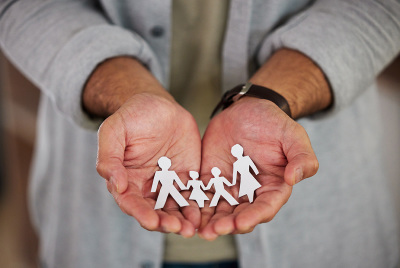Why the Church doesn't have to follow shifting adoption policies

As highlighted by the recent Angel Studios’ movie Sound of Hope: The Story of Possum Trot, there are over 400,000 children in the US foster care system, 117,000 of whom are waiting to be adopted.
One of the long-standing debates in the US foster care system is whether it is better for children to be reunified with their parents or put up for adoption. Would improved social services allow more parents to care for their biological children? Or does family preservation cause children to transition through many traumatic placements without the promise of permanency? Would those children fare better if placed for adoption right away?
Taking the argument to the extreme on either side does no one any favors — and often it is the children who suffer. In Santa Clara County, where I live, they decided to stop removing children from homes, except in extreme cases. Unfortunately, some cases slid under the radar and it took the death of a 3-month-old to make the state re-evaluate their policy.
On the other hand, removing kids at the slightest warning sign can discriminate against families from lower-income and marginalized backgrounds. For example, over 50% of black children will be subjected to a Child Protective Services investigation before their 18th birthday. The loss of the biological connection is traumatic, so family preservation should be the goal whenever safe and feasible.
As a Church, we really don’t have to choose between adoption and family preservation, yet we do need to support the children and families on both sides. It is a beautiful thing to watch a parent recover from addiction and regain custody of their children. It is also beautiful to watch a new family form to provide a child with a forever home if reunification is not an option.
What does it mean to hold views on family preservation and adoption in rightful tension? For foster parents, this means maintaining a relationship with the biological parents and seeing those individuals as in need of support and God’s grace. It means often bonding with and loving a child that they hope might be theirs one day, but also staying open to the possibility that the child could return to a stable home of origin. The goal is to reduce the time to permanency, so children don’t languish in ambiguity.
As a society, we have difficulty reconciling nuanced circumstances that are not black-and-white, but no child and family are the same. We can be supportive of adoption in general, while also providing material and community support to families in need through programs like CarePortal. When families are in crisis and lack physical and mental health resources, stress can take a toll on people’s ability to care for themselves and their loved ones. We can help prevent more child welfare referrals by loving our literal neighbors.
Policy will continue to sway with different administrations, but we, as the Church, don’t have to follow this shifting trend. We can be both pro-adoption and pro-family preservation, in the hope that both approaches together can place more kids in a safe and nurturing home.
Leah Sutterlin coordinates an adoption coalition with the National Council For Adoption, a leading expert on adoption advocacy, education, research, and development. She is an adoptee herself and has worked with non-profit organizations like the Christian Alliance for Orphans and Help One Child.




























